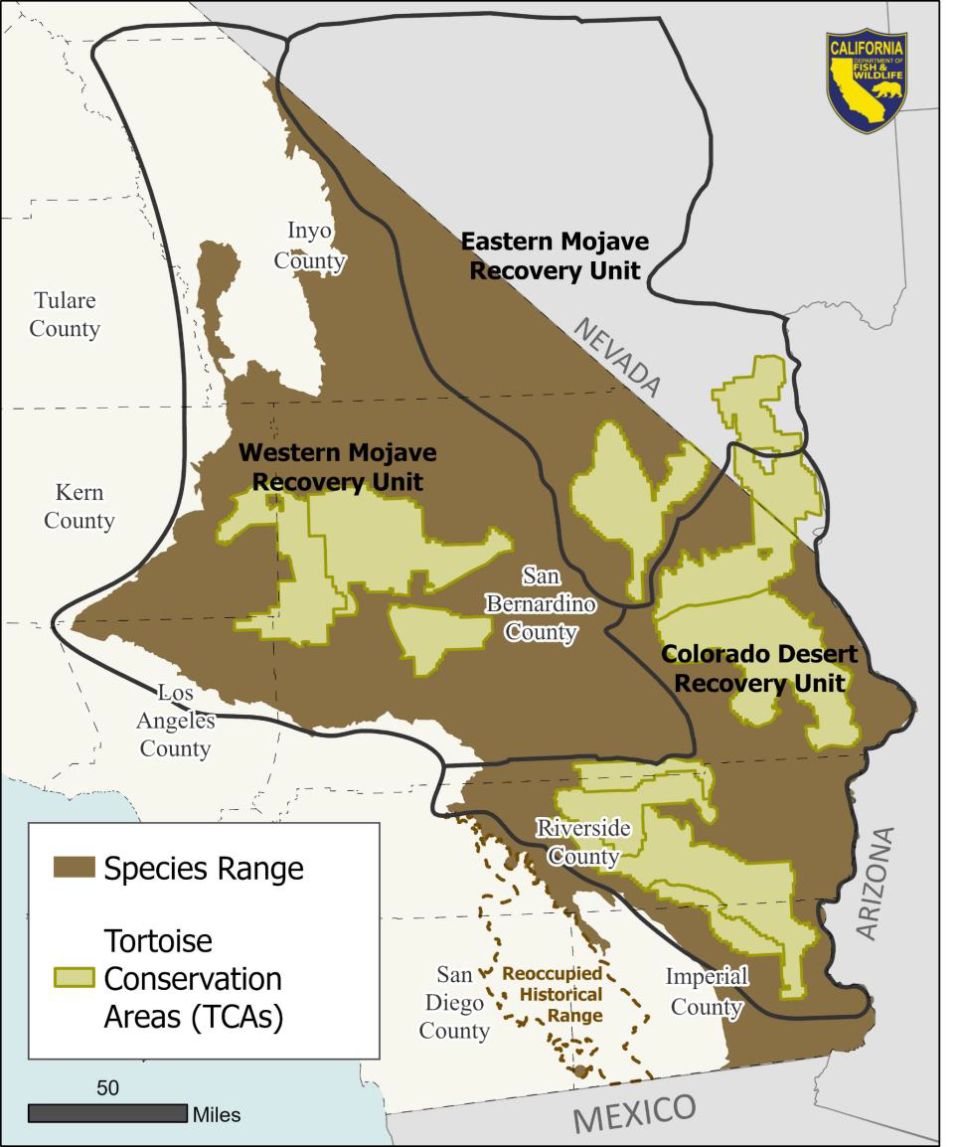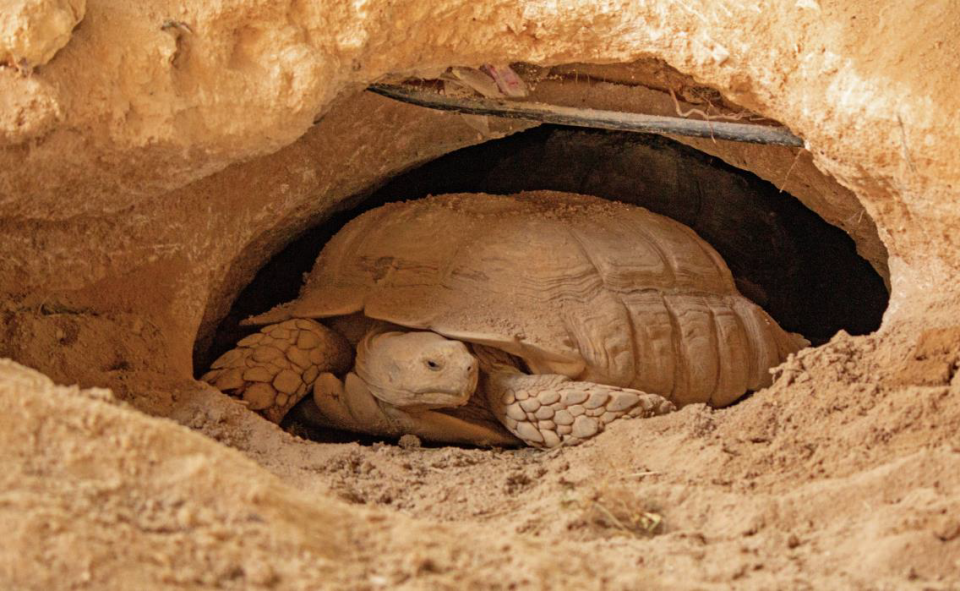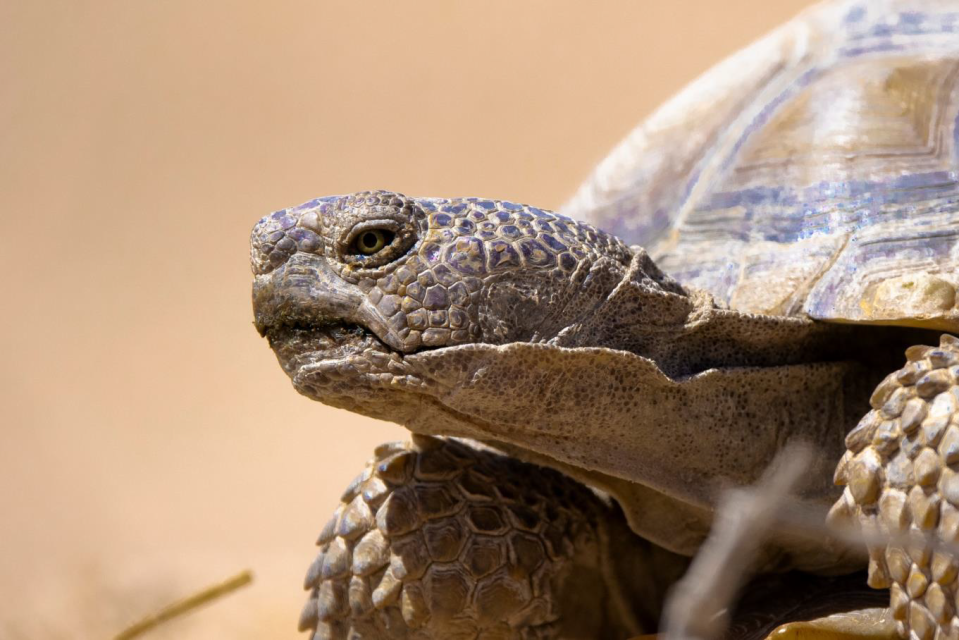Mojave desert tortoise named a California endangered species
Following more than three decades of declining numbers, the Mojave desert tortoise has been officially declared an endangered species in California.
The California Fish and Game Commission voted unanimously to “uplist” the shell dweller from its previous status of “threatened” under the California Endangered Species Act during a meeting on Thursday.
The Mojave desert tortoise has been listed as threatened at the state level since 1989, and since 1990 at the federal level.
But the species has continued to struggle, according to California Department of Fish and Wildlife Senior Environmental Scientist Anne Hilborn, who provided a presentation to the commission.
“In the 30 years since the tortoise was listed as threatened under CESA we have not seen recovery,” she said. “Instead, what we have seen is (that) in most of the areas considered to be the best habitat are below the level of population viability, and many of them have been that way for more than 20 years.”
The dwindling population has been most pronounced in the western Mojave Desert, where a survey found a 54% reduction in the number of animals between 2001 and 2020, representing the loss of 112,000 adult animals, according to a staff report prepared for the commission.

The eastern Mojave Desert region saw a population decline of 10%, or 5,000 tortoises, during the same time period. The Colorado Desert saw a decrease of 17%, representing about 13,000 tortoises.
Threats to the animals include habitat loss due to development, climate change, expanded activity at military bases, vehicles, wildfires, an increase in invasive grasses and a boom in explosion in the regional number of ravens, Hilborn said.
Ravens are adept hunters of juvenile tortoises, she said. And their population has steadily exploded in the Mojave desert tortoise’s range over the past 50 years as the birds follow human developments, and their garbage, ever deeper into the desert.
As long-lived, slow-growing creatures, tortoises don’t reach sexual maturity until between 12 and 20 years of age, Hilborn added. After that, female tortoises generally lay six to 12 eggs per year.

Nutritionally poor invasive grasses have been outcompeting native plants that the tortoises depend on for food.
“Tortoises can starve if too much of their diet is made of grass and not enough of their diet is made of wildflowers,” according to Hilborn.
The organizations Defenders of Wildlife, the Desert Tortoise Council and the Desert Tortoise Preserve Committee initially petitioned for redesignating the Mojave desert tortoise as endangered in 2020.

More: Desert tortoise rescued from bottom of mineshaft in Newberry Mountains Wilderness
“Listing the desert tortoise as endangered will likely increase allocation of funds for actions that are proven to be effective in conserving the species and its habitat,” according to a joint letter sent by the three organizations to the Fish and Game Commission. “(It) may also provide a regulatory environment where greater scrutiny of the adverse impacts of proposed land uses will occur and impact avoidance and mitigation requirements will be more effective and enforced.”
This article originally appeared on Victorville Daily Press: Mojave desert tortoise listed as endangered species

